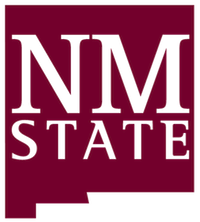Experts & Professionals
Cascading Disaster Models in Postburn Flash Flood
May, Fred. 2007. Cascading disaster models in postburn flash flood. Pages 443-464 In: Butler, Bret W.; Cook, Wayne (comps.). The fire environment-innovations, management, and policy; conference proceedings. 26-30 March 2007; Destin, FL. Proceedings RMRS-P-46CD. Fort Collins, CO: USDA Forest Service, Rocky Mountain Research Station.
Modeling hydrologic and geomorphic hazards across post-fire landscapes using a self-organizing map approach
Friedel, M.J. 2011. Modeling hydrologic and geomorphic hazards across post-fire landscapes using a self-organizing map approach. Environmental Modelling and Software 26: 1660-1674.
Predicting the probability and volume of postwildfire debris flows in the intermountain western United States
Cannon, S.H., Gartner, J.E., Rupert, M.G., Michael, J.A., Rea, A.H., Parrett, C. 2010. Predicting the probability and volume of postwildfire debris flows in the intermountain western United States. GSA Bulletin 122: 127-144.
Predicting postfire erosion and mitigation effectiveness with a web-based probablistic erosion model
Robichaud, P.R., Elliot, W.J., Pierson, F.B., Hall, D.E., Moffet, C.A. 2007. Predicting postfire erosion and mitigation effectiveness with a web-based probabilistic erosion model. Catena 71: 229-241.
Erosion Risk Management Tool (ERMiT) User Manual
Robichaud, P.R.; Elliot, W.J.; Pierson, F.B.; Hall, D.E.; Moffet, C.A.; Ashmun, L.E. 2007. Erosion Risk Management Tool (ERMiT) user manual (version 2006.01.18). Gen. Tech. Rep. RMRS-GTR-188. Fort Collins, CO: U.S. Department of Agriculture, Forest Service, Rocky Mountain Research Station. 24 p.
Validation of a probabilistic post-fire erosion model
Robichaud, P.R.; Elliot, W.J; cx Lewis, W.J.; Miller, M.E. 2016. Validation of a probabilistic post-fire erosion model. International Journal of Wildland Fire 25(3): 337-350.
Predicting postfire sediment yields at the hillslope scale: Testing RUSLE and Disturbed WEPP
Larsen, I.J., MacDonald, L.H. 2007. Predicting postfire sediment yields at the hillslope scale: testing RUSLE and Disturbed WEPP. Water Resources Research 43, W11412. doi: 10.1029/2006/WR005560.
Quantifying burn severity in a heterogenous landscape with a relative version of the delta Normalized Burn Ratio (dNBR)
Miller, J.D., Thode, A.E. 2006. Quantifying burn severity in a heterogenous landscape with a relative version of the delta Normalized Burn Ratio (dNBR). Remote Sensing of the Environment 109: 66-80.
Difference infiltrometer: a method to measure temporally variable infiltration rates during rainstorms
Moody, J.A. and B.A. Ebel. 2012. Difference infiltrometer: a method to measure temporally variable infiltration rates during rainstorms. Hydrological Processes 26: 3312-3318.
An Analytical Method for Predicting Postwildfire Peak Discharges
Moody, J.A., 2012, An analytical method for predicting postwildfire peak discharges: U.S. Geological Survey Scientific Investigations Report 2011-5236, 36 pp.
Silt fences: an economical technique for measuring hillslope erosion
Robichaud, Peter R.; Brown, Robert E. 2002. Silt fences: an economical technique for measuring hillslope erosion. Gen. Tech. Rep. RMRS-GTR-94. Fort Collins, CO: U.S. Department of Agriculture, Forest Service, Rocky Mountain Research Station. 24 p.
Quick Response Small Catchment Monitoring Techniques for Comparing Postfire Rehabilitation Treatment Effectiveness
Robichaud, P.R., Brown, R.E. 2003. Quick response small catchment monitoring techniques for comparing postfire rehabilitation treatment effectiveness. In 'Proceedings of the first interagency conference on research in the watersheds.' pp. 663-667. (US Department of AGriculture, Agricultural Research Service: Tucson)
Assessing Post-Fire Values-at-Risk With a New Calculation Tool
Calkin, D.E., K.D. Hyde, P.R. Robichaud, G.J. Jones, L.E. Ashmun, D. Loeffler. 2007. Assessing post-fire values-at-risk with a new calculation tool. Gen. Tech. Rep. RMRS-GTR-205. Fort Collins, CO: U.S. Department of Agriculture, Forest Service, Rocky Mountain Research Station. 32 p.
Field Guide for Mapping Post-Fire Soil Burn Severity
Parsons, A., P.R. Robichaud, S.A. Lewis, C. Napper, and J.T. Clark. 2010. Field guide for mapping post-fire soil burn severity. Gen. Tech. Rep. RMRS-GTR-243. Fort Collins, CO: U.S. Department of Agriculture, Forest Service, Rocky Mountain Research Station. 49 p.
Burned Area Emergency Response Treatments Catalog
Napper, C. 2006. Burned Area Emergency Response Treatments Catalog. Technical Report. 0625 1801-SDTDC, Washington, D.C.: U.S. Department of Agriculture, Forest Service, National Technology & Development Program, Watershed, Soil, Air Management. 266 p.
A Synthesis of Post-Fire Road Treatments for BAER Teams: Methods Treatment Effectiveness, and Decisionmaking Tools for Rehabilitation
Foltz, Randy B.; Robichaud, Peter, R.; Rhee, Hakjun. 2009. A synthesis of post-fire road treatments for BAER teams: methods, treatment effectiveness, and decisionmaking tools for rehabilitation. Gen. Tech. Rep. RMRS-GTR-228 Fort Collins, CO: U.S. Department of Agriculture, Forest Service, Rocky Mountain Research Station. 152 p.
Postfire Rehabilitation of the Hayman Fire
Robichaud, Peter; MacDonald, Lee; Freeouf, Jeff; Neary, Dan; Martin, Deborah; Ashmun, Louise. 2003. Postfire rehabilitation of the Hayman Fire. In: Graham, Russell T., Technical Editor. Hayman Fire Case Study. Gen. Tech. Rep. RMRS-GTR-114. Ogden, UT: U.S. Department of Agriculture, Forest Service, Rocky Mountain Research Station. P. 293-314.
Interagency Burned Area Emergency Response Guidebook
FSM 2500, Watershed and Air Operations. WO Amendment 2500-2004-1. [Effective February 2006]. Chapter 2523âEmergency Stabilization Burned-Area Emergency Response (BAER).






